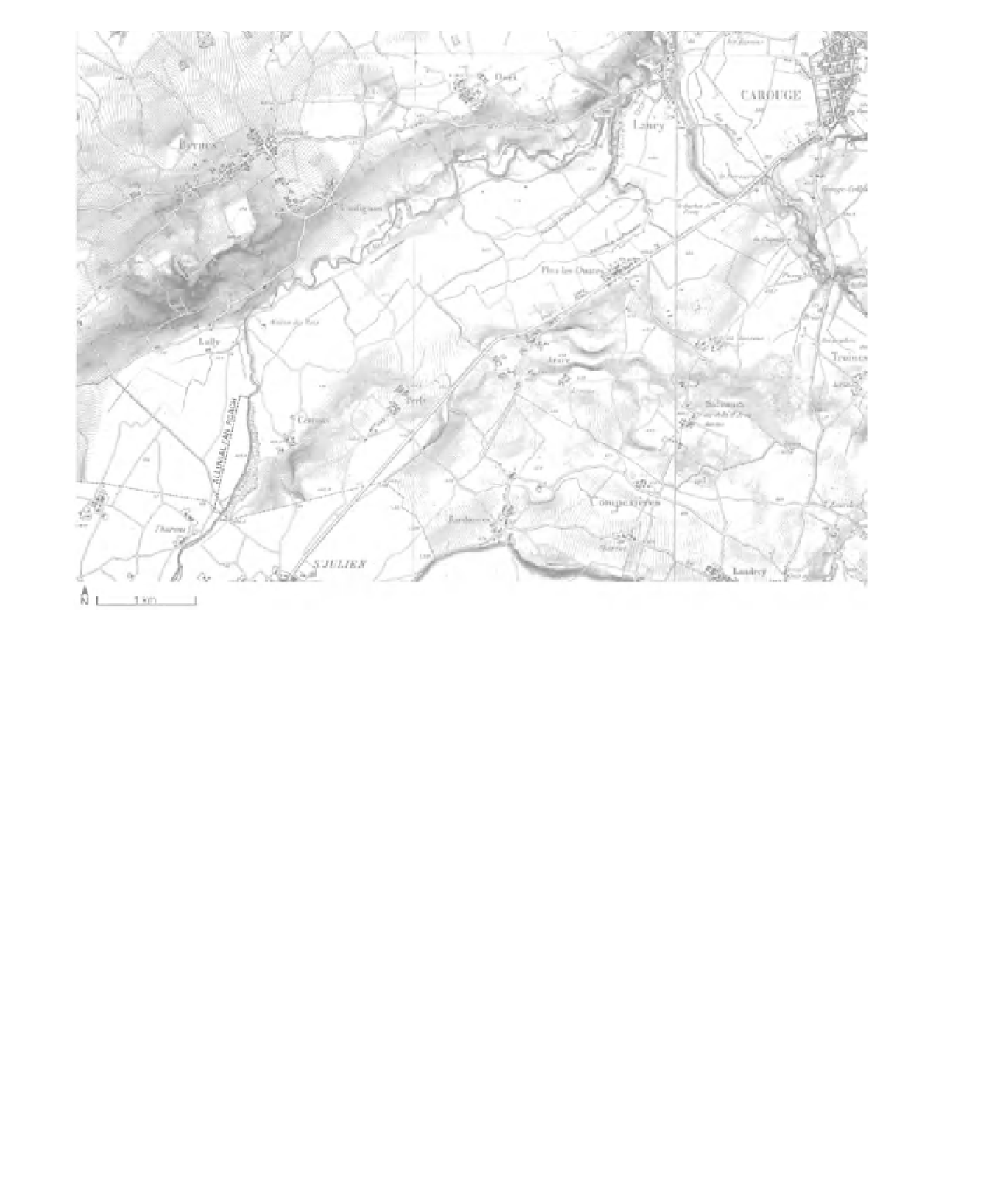Geoscience Reference
In-Depth Information
Figure 18.4
The Aire River as depicted on the Carte Dufour of 1871, showing wide dynamic
lit majeur
on the alluvial
fan reach.
than before. The existence of a subterranean
culvert under a densely developed part of the
city is also typical. While it solved a problem at
the time, it is a supremely inflexible approach
in that the capacity of the subterranean culvert
cannot be increased, except by exhuming the
culvert and increasing its dimensions - a project
whose costs and disruption would be prohibitive.
The appearance of houses on the floodplain
downstream of the Pont des Marais, despite policies
intended to prevent settlement on such flood-
prone lands, is also typical. In response to the new
population at risk, the public agencies' response
was to implement an engineering solution (the
flood bypass) rather than buying out badly-sited
dwellings (politically unpopular). The flood bypass
to the Rh one is useful as it also helps manage
flood waters that would threaten the industrial
area above the culvert downstream. As the climate
changes, more intense precipitation and thus more
intense floods are anticipated in coming decades.
Thus, there is a need to find ways to manage flood
waters in excess of the system's current capacity.
While the river's ecosystem has suffered greatly
from human modifications, below the channelized
reach and above the entrance to the culvert the
river remains remarkably intact and with strong
ecological values (between the Pont de Marais and
Pont Rouge, Figure 18.5). Societal expectations
today call for greater ecological integrity of
waterways, not only for biodiversity, but also
to allow natural processes of self-purification
to function, and to provide opportunities for
children to play and adults to relax beside streams.

